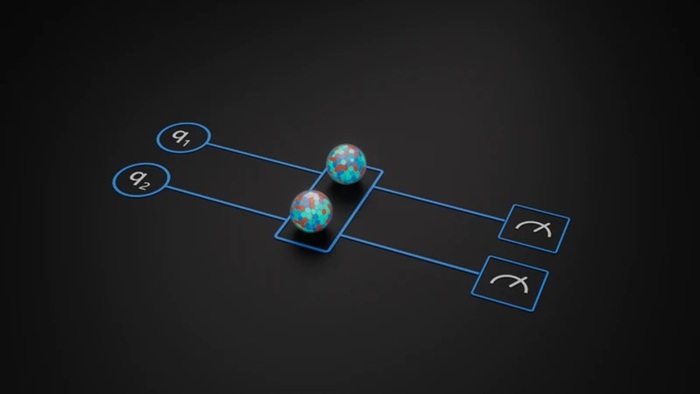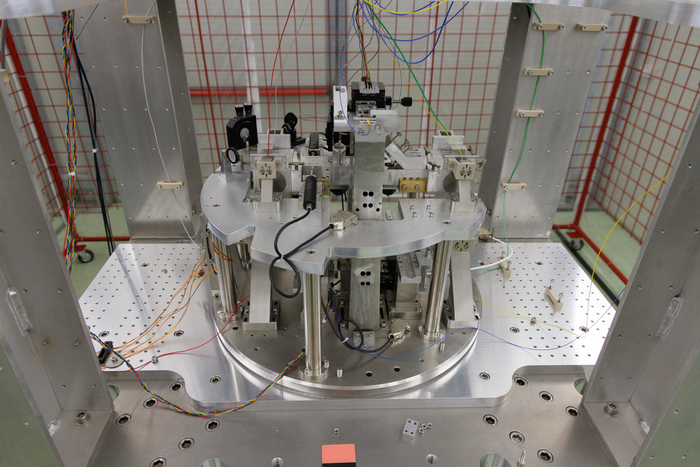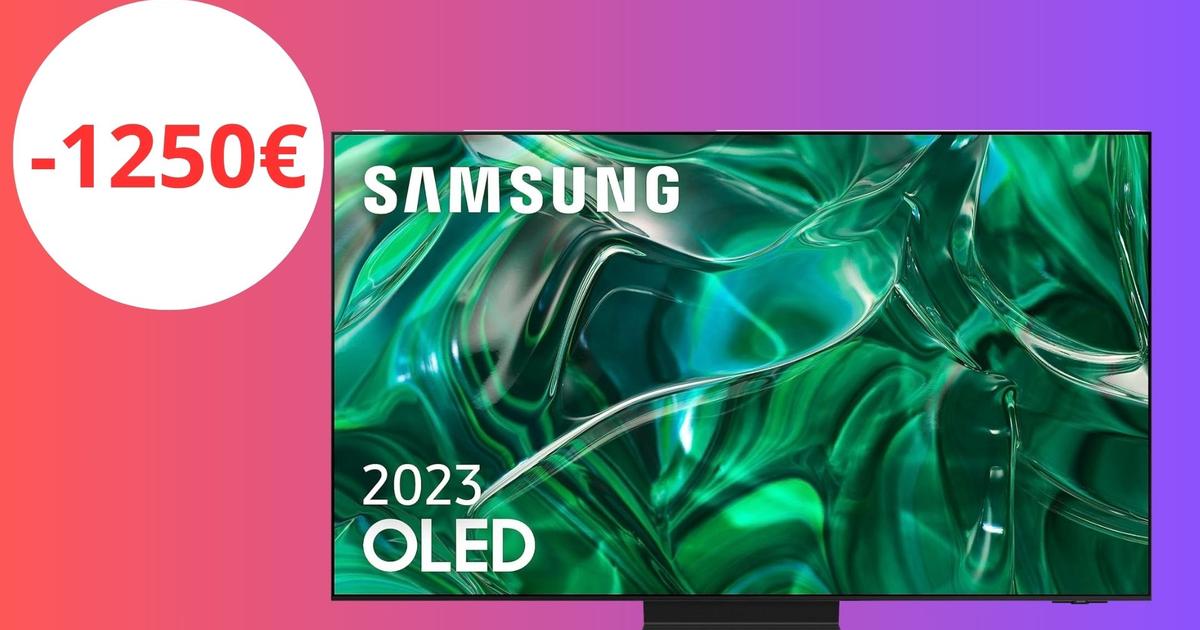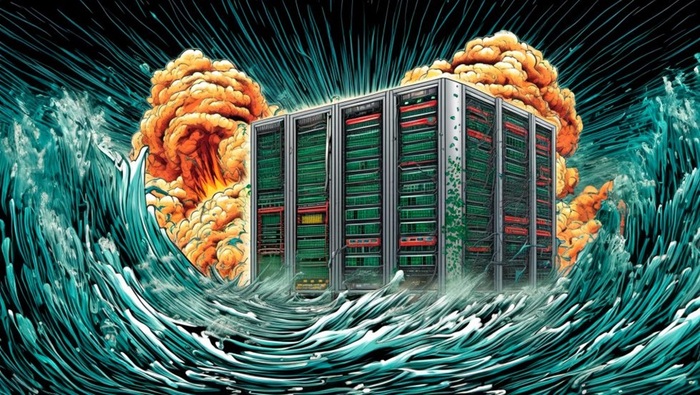Quside/ICFO ultrapure and ultrafast random number generator used during the experiment. Quside/ICFO
Physicist James Trefil said that quantum mechanics is a "region of the universe where the human brain simply cannot feel comfortable." And this discomfort is given because nature, on a microscopic scale, responds to laws that challenge our understanding of macroscopic reality. Among these behaviors are superposition (a particle can be in different states at once, like Erwin Schrödinger's living and dead cat) and entanglement at a distance or ghostly action, as Albert Einstein described the principle that allows separated and distant particles to respond instantaneously and behave as a single system. A spectacular experiment that defies the speed of light, published this Wednesday in Nature by an international team of scientists, led by the ETH (Swiss Federal Institute of Technology) in Zurich, with the collaboration of the Spanish entities ICFO (Institute of Photonic Sciences) and Quside, demonstrates for the first time this ghostly action in electrons separated 30 meters and with superconducting circuits, The most common systems in quantum computing.
This experiment again contradicts Einstein, who considered quantum entanglement impossible. The physicist defended that each particle has certain properties in its environment, that an action on it is generated in a certain place and its consequences are transferred (localism). Against this theory, quantum physics has shown that two entangled particles share a single unified state, although, as in the case of the experiment in Zurich, they are 30 meters apart.
For Einstein, it was completely unacceptable for something that is done in one place to have instant effect elsewhere. But John Bell showed in 1964 that it does happen, that quantum entanglement exists. Since then, experiments on this property have followed one another and the findings in this field by John Clauser, Alain Aspect and Anton Zeilinger earned them the Nobel Prize in 2022.
One of the greatest achievements of the experiment published on Wednesday is that it has run a proof of Bell's theorem (or inequalities) without loopholes, an English term that in quantum physics translates as loopholes. This absence of loopholes refers to the fact that everything happens exactly as predicted by quantum physics, that communication between particles has not been possible nor does it respond to a mere statistic.
An experiment in which the Spanish physicist Adán Cabello, from the University of Seville, participated, achieved results in this line with ytterbium and barium ions (Science Advances) a year ago. But the recent research raises the complexity by using two entangled superconducting qubits at temperatures close to absolute zero (−273.15 °C) and 30 meters apart.
Defying the speed of light
Simultaneous measurements of the two qubits yielded matching results about the state, a synchronized response consistent with a distant ghostly action or entanglement. To demonstrate the absence of loopholes, that the coordination of states was not due to signals sent between the qubits, random measurements were made in 17 nanoseconds, the time it takes light to travel five meters. The entire measurement required another 62 nanoseconds (the time of light to reach 21 meters). As the two systems were 30 meters apart, communication between them was impossible.
The research is key not only because it is a demonstration of quantum physics, but because it has practical applications. Morgan W. Mitchell, professor at the Catalan Institution for Research and Advanced Studies (ICREA) at ICFO and co-author of the study, explains that, "with classical computers, it is common for there to be computing on the web and for the results to reach your home device." "To do something equivalent with quantum computers," he adds, "we need to communicate them and it won't be by classical bits. It has to be by quantum bits and this entanglement is the most effective way to do it."
"This research shows that this type of experiment can be done with superconductors, the systems that Google or IBM use. Other systems that have been used were with a pair of particles. But this experiment has created entanglement between a large number of electrons at this site and a large number of electrons at another site. It's the first time this has been achieved without any loopholes."
Applications
The results allow, according to Mitchell, "to advance distributed computing, with several computers in several sites." "It's a long-term goal that we're not going to see immediately, but this experiment shows that it's feasible."
Carlos Abellán, co-author of the research, PhD in photonics from ICFO and co-founder and executive director of Quside (a company of quantum components that have been used in the experiment), highlights that, in addition to the qualitative leap in the experimental demonstration by elevating the systems to superconducting qubits, the work has meant "creating a spectacular and unique technology that has managed to demonstrate the synchronization of two particles with unprecedented speed."
The experiment has required the generation of quantum random numbers (QRNG) and their "extraction" at an extraordinarily fast speed (17 nanoseconds) to rule out any possibility of communication between the qubits. "We had to develop a totally new engineering to be able to generate the random numbers in such a way that we could do it before the information reached the other side. We needed to double the speed of the systems used before," explains Abellán.
More informationAlberto Casas' fundamental guide to understanding quantum physics: "We are alive thanks to the uncertainty principle"
"What we did was, instead of using one device and doing calculations, we put eight devices in parallel synchronized and combined the signal. In this way, we used 16 random number generators and managed to double the speed. If we had taken 19 nanoseconds instead of 17, the experiment would not have been valid," he adds.
The experiment proves that quantum information can be transmitted between separate superconducting circuits housed in cryogenic systems, that is, it is shown to happen and in systems already available for quantum computing. But it remains to be explained why it happens, why two separate systems behave as if they were one. "It's a question for philosophy, very difficult. You can ask 10 different physicists and you'll have 10 different answers. It is a mystery that other generations will have to solve. But what we can say with these experiments is that it really exists," Mitchell says.
You can write to rlimon@elpais.es and follow EL PAÍS Tecnología on Facebook and Twitter or sign up here to receive our weekly newsletter
Subscribe to continue reading
Read without limits
Read more
I'm already a subscriber

/cloudfront-eu-central-1.images.arcpublishing.com/prisa/M5DKSM7JZVEPNDYUMSJJX5IYBM.jpg)







